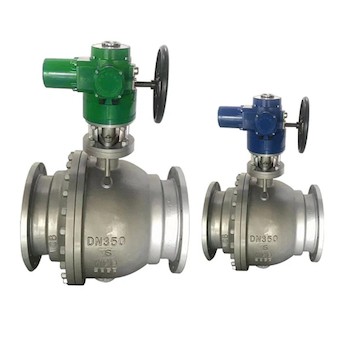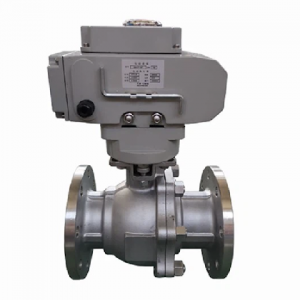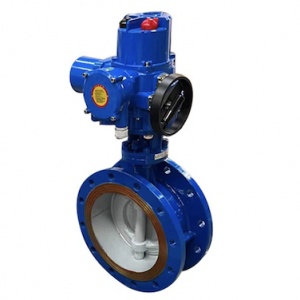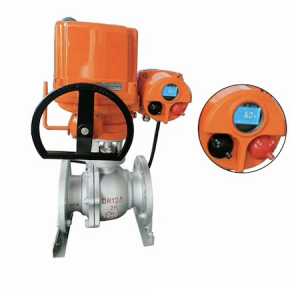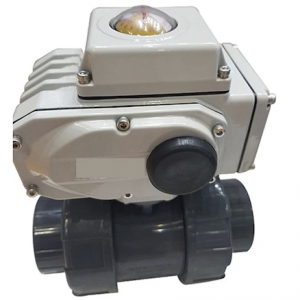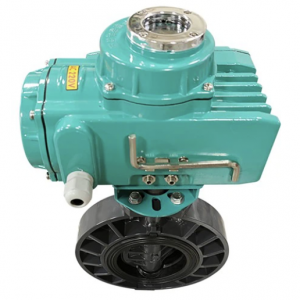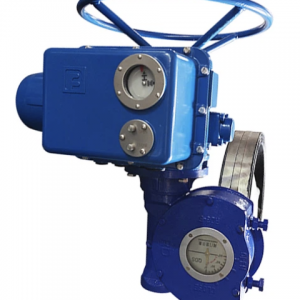Description
The Flange WCB Isolation Ball Valve ASME Class 150 ball valve is a sphere with a circular channel, which rotates around an axis perpendicular to the channel. The ball rotates with the valve stem to achieve the purpose of opening and closing the channel. The ball valve only needs to be rotated 90 degrees and a small rotational torque to close tightly. According to the needs of working conditions, different driving devices can be assembled to form ball valves with various control methods, such as electric ball valves, pneumatic ball valves, hydraulic ball valves, etc. When the ball valve rotates 90 degrees, all spherical surfaces should be present at the inlet and outlet. Thereby closing the valve and cutting off the flow of the medium.
Working Principle Of Ball Valve
The opening and closing part of the ball valve is a sphere with a circular channel, which rotates around an axis perpendicular to the channel. The ball rotates with the valve stem to achieve the purpose of opening and closing the channel. The ball valve only needs to be rotated 90 degrees and a small rotational torque to close tightly. According to the needs of working conditions, different driving devices can be assembled to form ball valves with various control methods, such as electric ball valves, pneumatic ball valves, hydraulic ball valves, etc.
Working principle of ball valve When the ball valve rotates 90 degrees, the inlet and outlet should all present spherical surfaces, thereby closing the valve and cutting off the flow of the medium.
Applications
For low temperature and low pressure, the material does not require significant adjustments.
Under high pressure and high temperature conditions, electric ball valves should be made of high-temperature and high-pressure resistant materials, such as stainless steel and alloy, which can withstand high pressure and high temperature.
The internal components of the electric ball valve need to be replaced to reduce damage to the valve core, while also facilitating the flow of media and avoiding coking and blockage of the electric ball valve.
When the electric ball valve is opened, some machinery that avoids vibration can be installed to prevent damage to the internal structure of the electric ball valve core during opening.
Installation and maintenance
Before maintenance, relieve the pipeline pressure and keep the valve in the open position; Disconnect the power or air source; Detach the actuator from the bracket;
It is necessary to first verify that the upstream and downstream pipelines of the electric ball valve have been depressurized before proceeding with disassembly and disassembly operations;
When disassembling and reassembling, care must be taken to prevent damage to the sealing surface of the parts, especially non-metallic parts. When removing the O-ring, special tools should be used;
The bolts on the flange must be tightened symmetrically, gradually, and evenly during assembly;
The cleaning agent should be compatible with the rubber parts, plastic parts, metal parts, and working media (such as gas) in the ball valve. When the working medium is gas, gasoline (GB484-89) can be used to clean metal parts. Clean non-metallic parts with pure water or alcohol;
The disassembled individual parts can be cleaned by immersion. Metal parts that have not yet been decomposed can be cleaned with a clean and fine silk cloth soaked in cleaning agents (to avoid fiber detachment and adhesion to the parts). When cleaning, all oil, dirt, glue, dust, etc. that adhere to the wall surface must be removed;
After cleaning non-metallic parts, they should be immediately removed from the cleaning agent and should not be soaked for a long time;
After cleaning, it is necessary to wait for the cleaning agent on the washed wall to evaporate (using a silk cloth that has not been soaked in the cleaning agent) for assembly, but it should not be left for a long time, otherwise it will rust and be contaminated by dust;
Use lubricating grease for lubrication. Lubricating grease should be compatible with metal materials, rubber parts, plastic parts, and working media of ball valves. When the working medium is gas, lubricating grease such as Te221 can be used. Apply a thin layer of lubricating grease on the surface of the seal installation groove, a thin layer of lubricating grease on the rubber seal, and a thin layer of lubricating grease on the sealing surface and friction surface of the valve stem;
During assembly, metal debris, fibers, grease (excluding those specified for use), dust, other impurities, foreign objects, etc. should not be allowed to contaminate, adhere or stay on the surface of the parts or enter the inner cavity.
Quality inspection before product leaving the factory
1. Inspect the products produced on the electric actuator production line every day, with a 100% inspection. First, open the indicator cover, check whether the wiring is aesthetically pleasing, whether the limit cams in the opening and closing directions are fully engaged, whether the pointer position is consistent with the actual position of the actuator, whether the screws inside are tightened, and after inspection, close the cover to check if there is any paint peeling on the appearance of the electric actuator. Stains, whether the manual wrench, waterproof joint, manual dust plug, mirror, and mirror cover are fully installed. If there is no error, use the laser marking machine to mark the product number on the back of the electric actuator. The product number should include the date of the day. Finally, the foam should be deducted for warehousing.
2. Inspection of complete sets of valves: After the operator of the valve assembly production line completes the debugging, they take the production order and find the quality inspector, The quality inspector checks each item according to the production order and product (inspection items: quantity, diameter, material, connection method of valves. Whether the pressure matches the production order, voltage, control type, connection method of electric actuators, whether they are explosion-proof products, whether they are consistent with the production order, whether the screws of valves and electric actuators are tightened, and whether they are missing)
3. Inspection before packing: Check whether the quantity, model, voltage, control method, and spare parts of the product match the production order.
4. Sampling inspection of products in the machining center: once a day in the morning and afternoon, take the inspection item table to the machining center, randomly select a processed product from each machine, and ask the machining center operator to measure it one by one according to the inspection item table and keep records.
